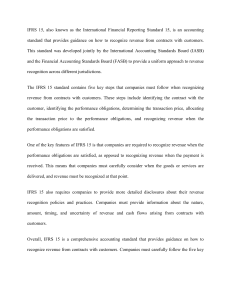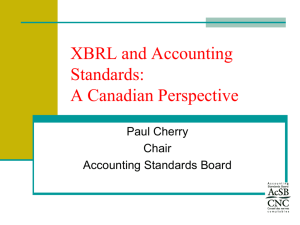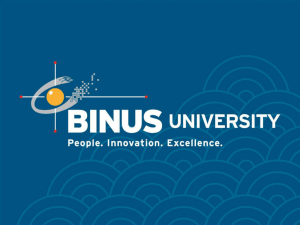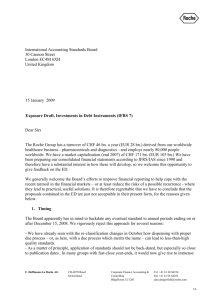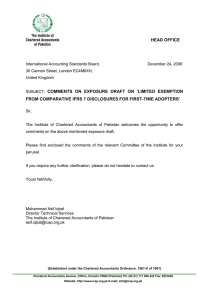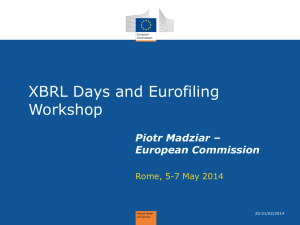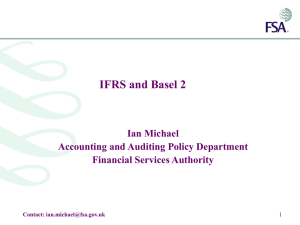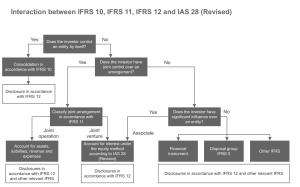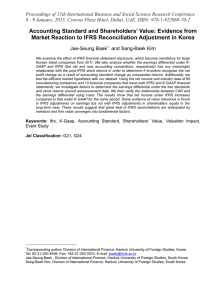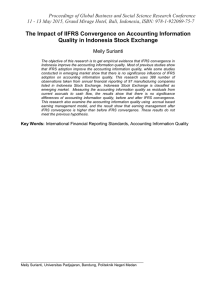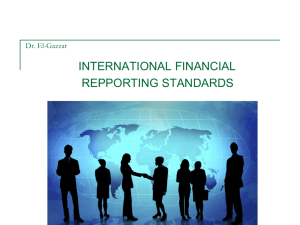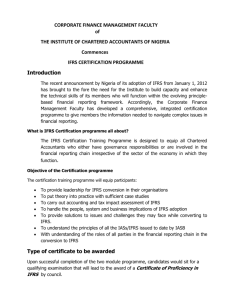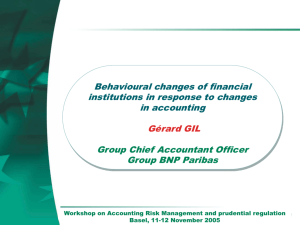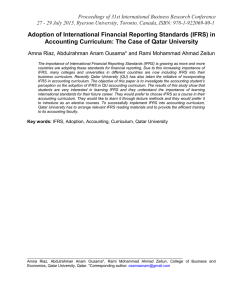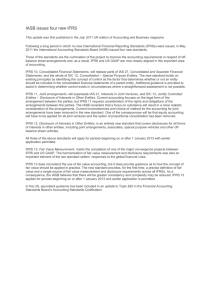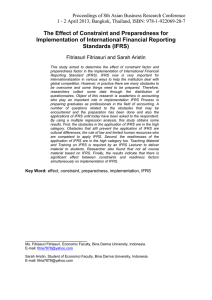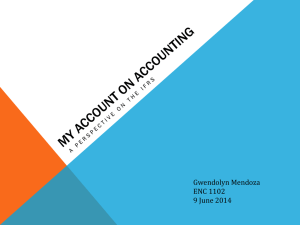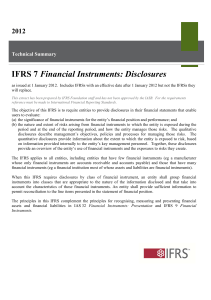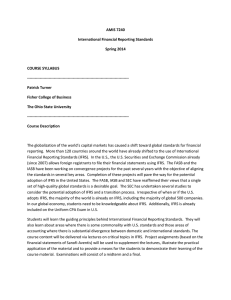View Presentations
advertisement
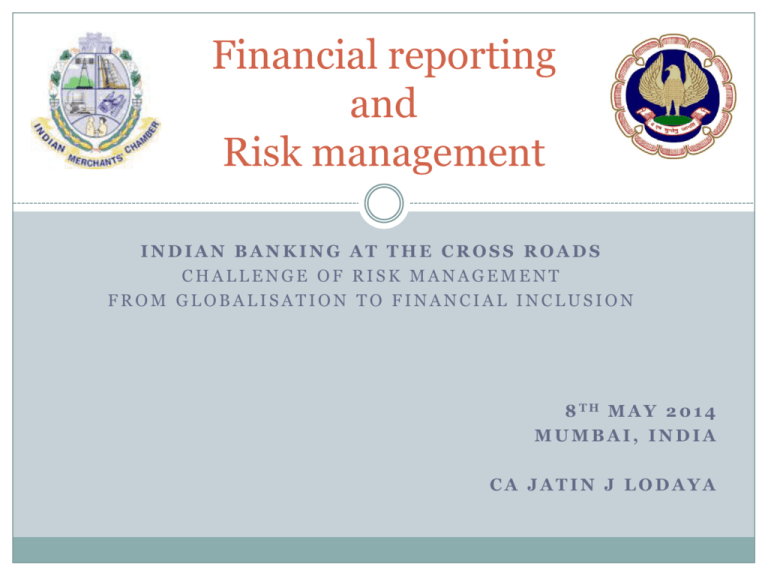
Financial reporting and Risk management INDIAN BANKING AT THE CROSS ROADS CHALLENGE OF RISK MANAGEMENT FROM GLOBALISATION TO FINANCIAL INCLUSION 8 TH M A Y 2 0 1 4 MUMBAI, INDIA CA JATIN J LODAYA BIS workshop held in November 2005 Accounting standard setters v/s Prudential authorities - different priorities/perspectives. Risk perception varies amongst stakeholders Conservative accounting standards might influence risk management decisions, contrary to economic logic. Financial reporting should provide a good sense of the impact of those risks and uncertainties on measures of valuation, income and cash flows. Financial reporting system to be consistent with sound risk measurement and management practices – relevant for making wellinformed decisions. Financial reporting – beyond numbers, should include estimates of risk profiles. Regulatory enhancements Enterprise risk management, RMF Risk appetite ICAAP Pillar 3 disclosures Basel II – advanced approaches Basel III – quality of capital Risk Based Supervision Automated Data Flow – DQ XBRL New Banking licenses IFRS Revised Companies Act Tax laws Globalisation need for consistent accounting and reporting practices, contagion risk Financial inclusion – different business models Alignment of business strategy, scalable IT systems, performance management and reporting platforms FR and RM– the collaboration (1/3) IFRS v/s converged IndAS Financial reporting is primarily from accounting ledger, whereas risk management data is not Chart of accounts level v/s transaction level KPI’s & KRI’s (e.g. CAR, Leverage ratio, liquidity ratio, AD ratio, NPAs, NIMs, operational losses, reputational risk, early alerts, reconciliation breaks) Risk measurement, perception of risk, prudential norms (income recognition, impairment and de-recognition norms) Global v/s local norms (impacts cost of capital and cost of compliance) (e.g. IFRS, intra group exposures, collateral security, CVA, exposure to CCP, net v/s gross MTM) FR and RM– the collaboration (2/3) Fair valuation v/s Historical cost accounting (MTM, LoCoM) (investments, collateral security) – principal of conservatism, application of risk margins, models validation, accounting v/s economic valuations Expected loss (dynamic loan loss provisioning, LGD) v/s Incurred loss Off balance sheet exposures Unhedged forex exposures Unfunded retiral liabilities FR and RM– the collaboration (3/3) Past v/s Forward thinking (trend analysis), MMA, stress testing External v/s Internal reporting (slicing/dicing) Standardised / template driven disclosures v/s best practices. Additional disclosures in annual reports have increased their size. All of these cannot be verifiable Risk Based Supervision – DQ challenges (completeness, accuracy) ADF (Data integrity, granularity, zero touch approach), XBRL (consistency, reduced errors, timeliness) Thank you IFRS ADF ICAAP Q&A j a t i n l o d a y a @ g m a i l . co m
